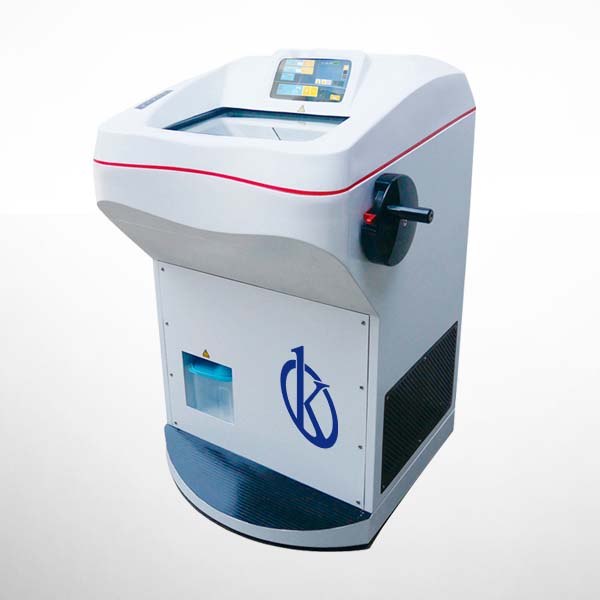This area of medicine studies the morphological basis of the disease, that is, it is based on direct observation of the organ suffering from a disease, laboratories that are dedicated to this area carry out certain research methods such as microscopic observation based on histological, histochemical, electron microscope, immunohistochemical techniques, and more recently, of molecular techniques of special application in the pathology of cancer.
This type of laboratory is characterized by the absence of direct contact with the patient, although it is undoubtedly the specialty to which all physicians who need a diagnosis to establish a treatment to the pathological symptoms presented by the patient are directed; the result of this is an anatomopathological report that is generated by integrating the information obtained through the examination of tissue or cell samples that are made in the laboratory of pathological anatomy with different procedures, with the clinical information of the patient.
Tests that are performed in a pathology laboratory
Both in public and private health centers, the pathological anatomy laboratories provide a medical service consisting of processing biopsy and cytology samples by specialized technical staff, so that they can then perform a microscope examination, interpretation and diagnosis by a pathologist. Some pathology tests include the Pap test, thyroid puncture, and cancer cell analysis. These studies are done from a tissue sample, when biopsy is needed. The tissue may be the breast, skin, liver, tumor or any other organ in the body.
Biopsy studies are one of the common and basic functions in pathological anatomy laboratories, as it is the most effective method to diagnose and prevent tumor and non-tumor pathologies, so the general services provided by a pathological anatomy laboratory are as follows:
- Biopsy and cytology processing.
- Intraoperative biopsies.
- Advice on the conduct and dispatch of immunohistochemistry studies to other centers.
- Biopsies and Surgical Parts.
- Gynecological Exfoliative Cytology.
- Non-Gynecological Exfoliative Cytology.
- Puncture-Aspiration (PAAF) of Palpable Masses.
- Puncture-Aspiration (PAAF) of Deep Masses.
- Intraoperative Biopsies.
- Adult, Perinatal and Pediatric Autopsies.
- Donor Organ Biopsies.
Categories of pathological anatomy laboratories
- Histopathology: microscopic examination of intact tissue resulting from biopsy or surgery. They are usually performed under special staining techniques and other associated tests, such as using antibodies to identify different tissue components.
- Cytopathology: is the study of a cell or small groups of cells caused by the scraping or aspiration of the liquid or tissue under the microscope. It is common in the study of cervical smear with Pap Staining.
Medical equipment used for laboratory examinations of pathological anatomy
It is important to have our laboratory of pathological anatomy equipped to be able to carry out the tests that correspond to this specialized area, we must also choose the best Manufacturer of Laboratory Equipment, and this market the best are KALSTEIN, we not only guarantee you a high technology equipment but an incomparable price and guarantee, now, in our YR series, you will find the medical line and the best pathological anatomy equipment here we mention them:
- Tissue Water Bath.
- Tissue Flotation.
- Cooling Plate.
- Tissue Processor.
- Paraffin Trimmer/Dispenser.
- Slide Dryer.
- Series Of Microtomes.
- Tissue Inclusion System.
- Automatic Object Carrier Staining.
You want to know the catalog of high-end products that we, KALSTEIN have for you, visit us HERE we have a specialized team that will answer your doubts, with us you will be able to equip effectively and with the best devices your laboratory of pathological anatomy, in addition we assure that through our online sales channels is very easy and viable, remember we are Company manufacturer of Laboratory Equipment recognized worldwide.

